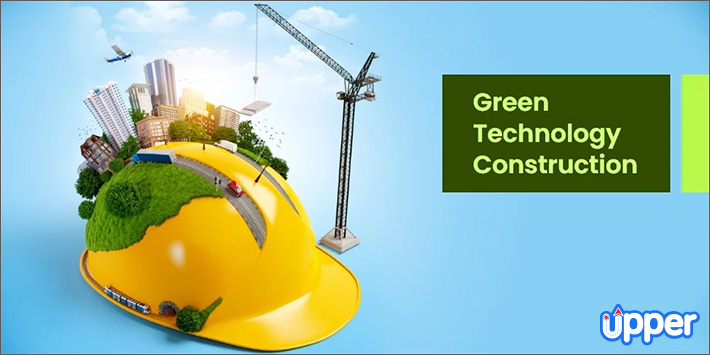Discover how sustainable construction practices are transforming the UK building industry, creating a greener tomorrow while cutting costs today.
The UK construction industry stands at a pivotal moment as sustainable building practices reshape the landscape of development across Britain. With the sector accounting for nearly 40% of the nation’s carbon emissions and consuming vast quantities of raw materials, the shift towards sustainable construction isn’t just an environmental imperative – it’s becoming an economic necessity.
Understanding the Sustainable Construction Revolution
The sustainable construction revolution in Britain represents a fundamental shift in how we approach building projects. This transformation is driven by several key factors, including the UK government’s commitment to reaching net-zero emissions by 2050, rising energy costs, and increasing consumer demand for environmentally responsible buildings. Currently, more than 65% of UK construction firms are actively incorporating sustainable practices into their operations, marking a significant increase from just 30% five years ago.
The Environmental Impact of Traditional Construction
Traditional construction methods have left an indelible mark on our environment. In the UK alone, the construction sector accounts for: 36% of total energy consumption, 40% of carbon dioxide emissions, and generates approximately 120 million tonnes of waste annually. These stark statistics highlight the urgent need for sustainable alternatives. Beyond emissions, traditional construction practices contribute significantly to resource depletion, with the industry consuming about 400 million tonnes of material each year, making it the UK’s largest consumer of natural resources.
Key Components of Sustainable Construction
Innovative Materials and Resources
- Cross-laminated timber (CLT) – reducing carbon footprint by up to 40% compared to traditional materials
- Recycled steel and aluminium – cutting embodied carbon by up to 95%
- Low-carbon concrete alternatives – incorporating industrial by-products like fly ash
- Reclaimed materials – reducing waste and preserving historical elements
- Bio-based materials – including hemp, straw, and mycelium-based insulation
Energy-Efficient Design and Systems
Modern sustainable construction prioritises energy efficiency through innovative design and technology integration. This includes the implementation of Passivhaus principles, which can reduce energy consumption by up to 90% compared to conventional buildings. Smart building management systems, triple-glazed windows, and advanced insulation materials are becoming standard features in sustainable construction projects across Britain.
Waste Reduction Strategies
- Building Information Modelling (BIM) for precise material ordering
- On-site waste segregation and recycling programmes
- Prefabrication and modular construction techniques
- Material passport implementation for future recycling
- Circular economy principles in design and demolition
Economic Benefits of Sustainable Building
The economic advantages of sustainable construction are becoming increasingly clear. Studies show that sustainable buildings in the UK command rental premiums of up to 11% and sales premiums of up to 25%. Operating costs are typically 20-30% lower than conventional buildings, primarily through reduced energy and water consumption. Additionally, sustainable buildings often benefit from enhanced durability and reduced maintenance requirements, leading to significant lifecycle cost savings.
Real-World Success Stories
The UK leads by example with numerous successful sustainable construction projects. The Bloomberg European Headquarters in London achieved a BREEAM score of 98.5%, the highest ever awarded. The Enterprise Centre at the University of East Anglia demonstrates the viability of bio-based materials, while the Paradise development in Birmingham showcases how large-scale commercial projects can embrace sustainability without compromising on quality or profitability.
Overcoming Implementation Challenges
- Initial cost barriers – addressed through government incentives and long-term cost savings
- Skills gap – resolved through targeted training programmes and industry partnerships
- Supply chain complexity – managed through digital tracking and local sourcing
- Regulatory compliance – simplified by early planning and expert consultation
- Technology integration – supported by industry-wide collaboration and knowledge sharing
The Future of Sustainable Construction in Britain
The future of sustainable construction in Britain looks promising, with several key trends emerging. By 2025, experts predict that 75% of new commercial buildings will be built to net-zero standards. Technological advances in materials science, artificial intelligence, and renewable energy systems are expected to drive further innovations. The UK government’s commitment to sustainable development is reinforced by stringent building regulations and ambitious carbon reduction targets.
Making the Transition to Sustainable Construction
For construction professionals and property developers looking to embrace sustainable practices, the transition requires a structured approach. Start by conducting sustainability assessments of current projects, investing in staff training, and developing relationships with sustainable material suppliers. Utilise available resources such as the UK Green Building Council’s guidance and take advantage of government incentives for sustainable construction. The journey to sustainable construction is not just about meeting regulations – it’s about future-proofing Britain’s built environment for generations to come.
FAQ
What are the examples of sustainable construction practices?
Reduce waste by reusing and recycling existing materials, building repurposable, adaptive structures, and avoiding hazardous materials and processes. Prioritise energy efficiency in the building process and its design. Include great insulation, energy-efficient appliances, and location-informed design.
What are the three main principles of sustainable design construction?
Sustainable design principles aim to: Optimize site potential. Minimize non-renewable energy consumption and waste. Use environmentally preferable products.
Sources
[1] https://compliancechain.com/sustainability-in-construction-why-it-matters/
[2] https://amtivo.com/uk/standards/iso-14001/insights/what-is-sustainable-construction/
[3] https://www.construction21.org/articles/h/what-is-sustainable-construction.html


Leave a Reply